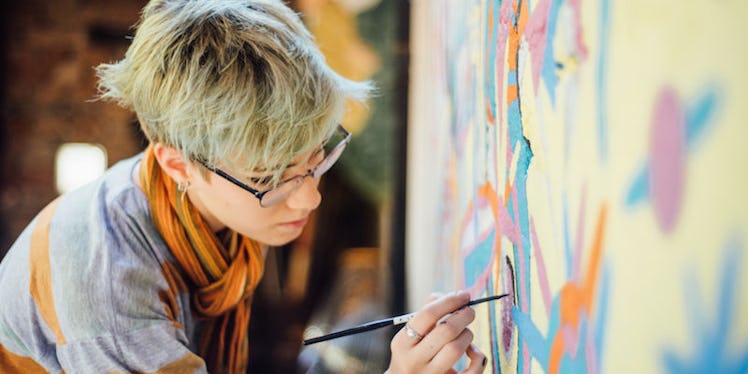
You Can't Grade Art: How Liberal Colleges Are Harming Creativity
As I sat down nervously to meet my professor for a paper proposal, I looked around his office. I started eyeing the different books he had stuffed into the shelves above his desk.
Titles such as “Studying Fiction” and “The Rules Of Grammar” really stood out to me.
It made me question why people thought there were such strict guidelines or structures needed in writing, when to me, it has always been a way of freeing myself from such rigidity.
As we got into a discussion about my proposal, I started to sense the confinement that developed in my professor's mind while reading such material.
When I attempted to explain my thoughts on a short story he had assigned me to read, he looked at me, utterly confused.
He disagreed with the way I interpreted the story, and it made me question what this writer was trying to explain through her words.
I went crazy, reading it over and over again, trying to find its hidden meaning. Why was it that I saw it one way, while my professor saw it another?
I found the short story to be poetic, beautiful and containing a hidden message. He described it as a failed attempt to rewrite a fairy tale.
Most of my English classes have made me feel this way: irritated.
Agitated.
I never seem to get it right with my professors. One wants us to write one way, while the other wants us to interpret something another way.
I finally realized this conflict is completely unnecessary.
In my point of view, writing shouldn’t have to be interpreted at all, especially not if it has to correspond with another perspective.
I don’t think Hemingway sat around reading books about the rules of grammar so his readers could interpret every period at the end of his sentences. Nor do I think Picasso created his own, unique style of art by following advice on how to draw a portrait.
They feel and express.
This is how you create.
I believe there will always be individuals who study art and individuals who create it.
There will be the people who enjoy interpreting art, and there will be the artists who will be unable to explain the meaning of their own art.
That is the thing about artists.
As creative types, we are inexplicably aware there are just some thoughts, perceptions, concepts and opinions bundled up deep within ourselves that we just can’t explain.
This is why we need art.
We need art to somehow construct these thoughts into tangible form.
We need to lay out something in front of us, and even as it is — even as we look at it, analyze it, listen to it, smell it and feel it — there is still no way we can completely explain it.
That is why creative types can’t as easily study art. It messes with our creative minds.
To say a compiled set of words in a story means one thing over another just upsets me.
How can we assume art has to be interpreted in a certain way?
We can't assume a few words meshed together in creative poetry are undoubtedly stating one thing over another, despite the fact that the one reciting the poem has created it through his or her own perception and experience, not ours.
We don’t know the emotion that was placed in the poem, or why one word is stated louder than another while being performed.
We don’t know if the clouds in the setting of a story mean the character is gloomy, or if the writer just happened to be writing on a stormy day.
Art is what it is.
Analyzing it can only make a creative type go crazy.
We know the process it takes to come up with such a thing.
Most of the time, it just flows out from the mind, the heart and the soul onto a piece of paper.
It is not analyzed in the creative process.
We do not consider the little details that will appease the audience attempting to study what our writing reveals about our psychological state because it comes out naturally.
It is not to be deconstructed, taken apart and cut up so a student may be able to configure what it was like to be that artist.
Artists don’t want you to analyze.
Artists want you to enjoy.
They want you to sit back, see and feel.
There are some things your mind just can’t fully understand, and that’s when you need your body as a whole.
This includes the heart, the eyes, the ears and the soul. Everything should just be in touch with one another.
Art is to be enjoyed in the moment.
It’s to somehow feel connected by this mutual understanding that life, the world and our perspectives are at some points completely impossible to explain, figure out or regulate.
Art is created by these feelings: the confusion, the emotions and the things we can’t possibly explain.
If you attempt to put a piece of art into words so blatantly, it just isn’t art anymore.